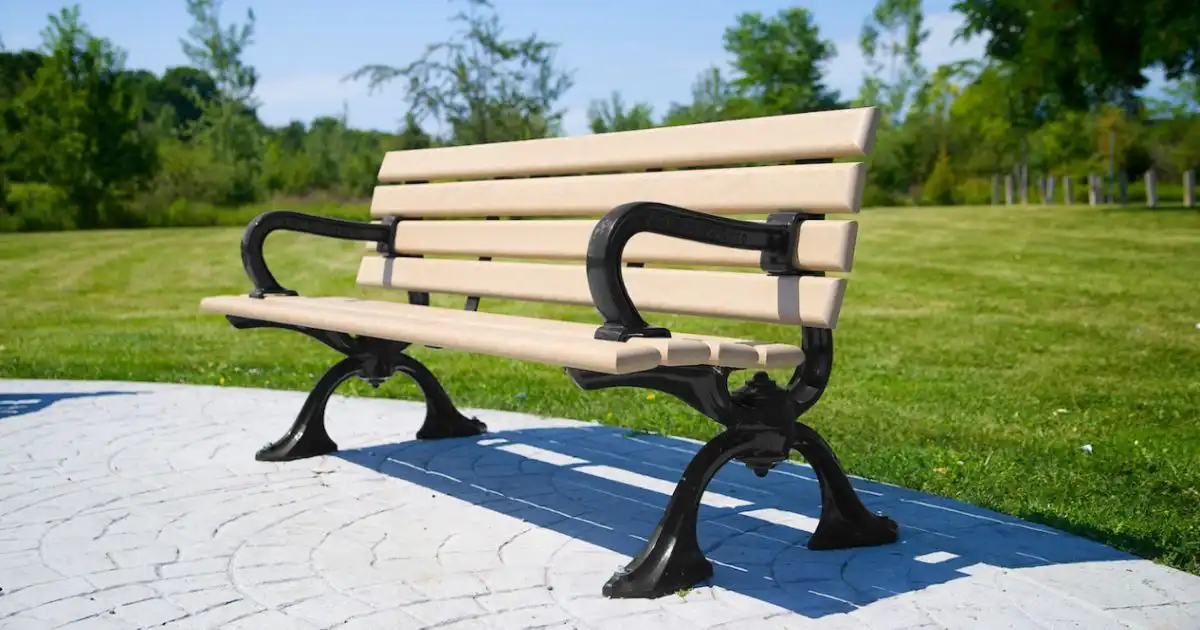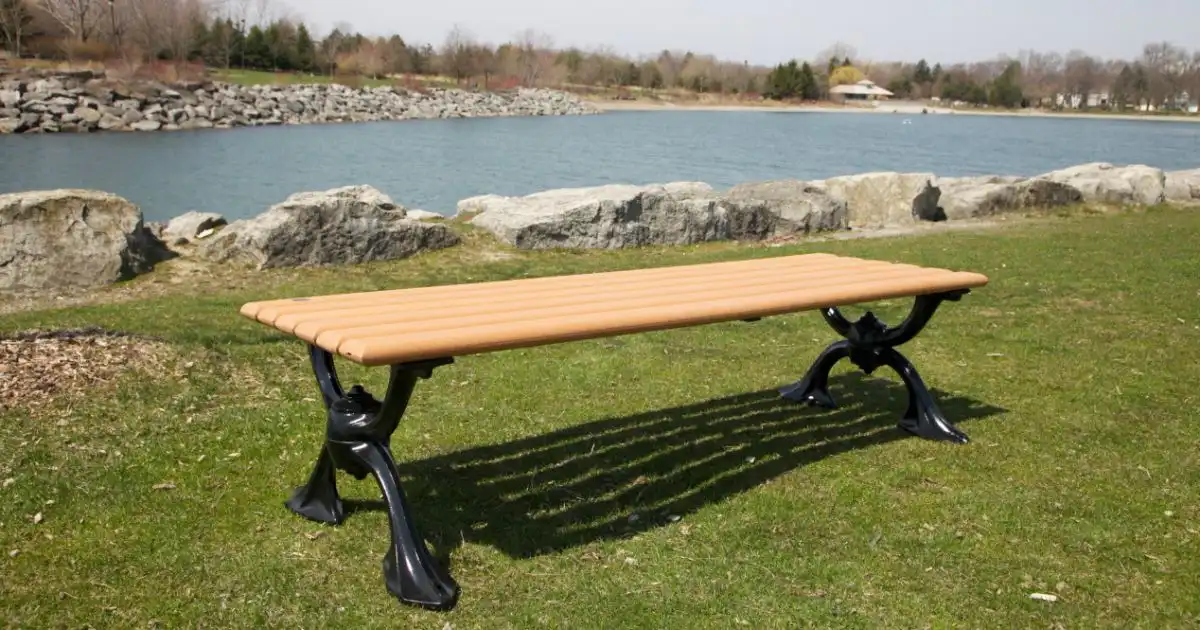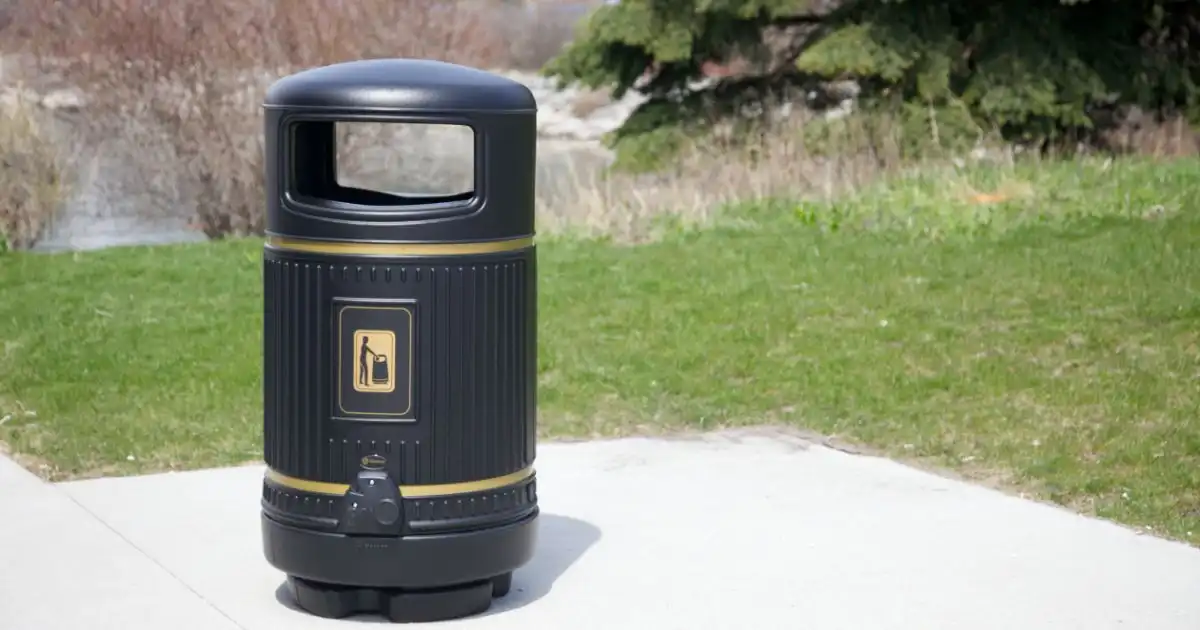
When creating spaces meant to be a memorial site, it can be hard to feel comfortable adding things to the surrounding area. They feel like sacred grounds that shouldn’t be disturbed – but, the truth is, adding site furniture not only enhances memorial spaces, it makes them more accessible.
At Classic Displays, we understand that creating memorial spaces is a delicate process where you want everything to be perfect. Luckily, with our guidance, you can tastefully weave site furniture into memorial spaces without taking away their significance.
Without any further hesitation, let’s delve into how you can incorporate site furniture into memorial spaces in a way that respects the people whose memory you’re trying to honour.
Memorial spaces exist in many forms. In many cities and towns, trails are often speckled with messages or memorial benches honouring members of the community who made significant contributions. In other cases, statues or plaques may linger around city halls, or trees and gardens may have been planted in honour of people who were lost too soon.
Either way, these areas can’t fully be enjoyed without the presence of comfortable and accessible site furniture. Why? Because the memory of those who have passed should be enjoyed and embraced by everyone, even people who have limitations. Keeping the area clean and well-respected also requires certain pieces of outdoor furniture.
When it comes to looking into the past of memorial space design, you’ll see plenty of articles about war memorials. However, the truth is, memorial spaces have existed since ancient times. Whether you look at the tombs of pharaohs or the gravesites of wartime heroes, you’ll see decades, if not centuries of history of honouring the dead. If you were to look at the Canadian War Museum, you’d see plenty of examples of how soldiers were remembered in post-war times.
But why do we create memorial spaces? And what truly constitutes a memorial space?
Memorial spaces are designed to be a long-lasting tribute to someone or multiple people who have passed on. It’s an area where those who love them or those who wish to know them can spend time and feel their presence. The National Library of Medicine cites that memorials have a significant impact on reflection and addressing grief. This means memorial spaces don’t just provide emotional support; they can be a significant part of psychological healing.
When the people who make the biggest impacts on our lives pass – whether they are influential community members or cherished loved ones – it can be hard to let them go. Memorial spaces provide a refuge where people can envelop themselves in their memories and find some semblance of comfort and peace.
Memorial spaces are significant because they represent something important: not allowing the memory of a person or several people to quietly fade away. Instead, they memorialize them, keeping their memory going strong and providing a safe space to reminisce, enjoy, and grieve their legacy.
Memorial spaces are meant for everyone. That includes people with physical limitations, community members, and everyone in between. That means that these areas not only need to be accessible, they also need to be convenient without disrespecting the memory of those lost.
But, how do you tastefully weave site furniture into memorial spaces? We’re glad you asked.
First of all, not all site furniture is just meant to be “plopped down” and forgotten. In fact, many memorial areas feature site furniture such as memorial benches with plaques or commemorative text explaining the date of birth, death, along with quotes or significant scriptures about the person they’re meant to represent.
Not only this, but memorial benches and similar structures are designed to honour mentors, heroes, and loved ones while also providing comfort and healing to those who utilize them. They’re a tangible, “non-removable” item that remains even after the person or persons have moved on. It creates a space where their memory has a physical entity of sorts that can be enjoyed and cherished by those who wish to remember them.
Memorial spaces also need to have a high degree of accessibility; not just because it’s polite, but because it's likely that the people who want to use the area may have different needs, physical limitations, and more.
For one, accessible memorial benches ensure that elderly loved ones or those with disabilities are not barred from giving their respects to the space; while having well-placed garbage and recycling bins ensures memorial areas aren’t being littered on or defaced.
You can also add a specialized touch by commissioning a memorial bench that honours the memory of the person or persons the space is meant to immortalize. This provides loved ones with an opportunity to embrace and feel the presence of the remembered in an area that is not only beautiful, but barrier-free and clean.

Organizing site furniture in a commemorative space can be hard, especially if there are several key memorial items already present. Whether it’s a tree, memorial bench, statue, or plaque – you want to make sure the site furniture complements the space without taking away from the initial intention.
The best way to place site furniture in a respectful and practical way is to ensure that not a single piece is too close or obstructing memorial structures. Not only this, but site furniture designed to provide seating or reprieve needs to be strategically placed to make sure there are plenty of places to not only rest, but quietly enjoy the area with full relaxation.
Memorial spaces are also designed for honour – meaning the last thing you’d want to see is trash or recycling littering the ground.
Site furniture is essential to making a memorial space comfortable, accessible, and honourable to those who the space represents.

We’ve spoken a lot about logistics, but how do we ensure the public don’t deface a memorial space? The simple answer is to communicate to the community the importance of the area and the need to treat it with kindness, but there are additional measures that can be taken.
1. Along with Site Furniture, You Need Cameras: Security cameras ensure that if anyone defaces the memorial, there is clear evidence of their wrongdoing. Not only this, but the formidable glow of a little red light lets violators know their actions aren’t being ignored.
2. Eliminate Dark Spaces: Overhead lights or motion-activated lights let perpetrators know that their crimes won’t be committed in darkness. In fact, it’ll be in full and complete display.
3. Engage With Your Community: Talking with the people around you ensures they understand the significance of a given topic, including respecting a memorial space.
While you may not be able to reach everyone, you can rest assured that making meaningful connections with others allows you to form a support group. People who understand your pain and can help you get through it.
4. Connect with Family & Loved Ones: If you’re representing someone who passed, you need to make sure that those who cherished them are involved in the design and implementation process of their memorial site. This is something that requires multiple opinions and perspectives, ensuring that everyone who loved the departed is satisfied and feels at ease.
5. Add Clear, Concise Signage: An important element to ensuring memorial spaces are kept pristine is to include signage. This includes ‘stoop and scoop,’ referring to cleaning of animal feces; ‘no littering’, to ensure no one treats the grounds as a dumpster; or ‘quiet zone’, indicating the space needs to be enjoyed at a low volume.
OK, we’ve given you a lot of info! But, how do we make memorial spaces… well, memorable? There are plenty of ways to do this, in particular, by adding flowers, foliage, and unique landmarks.
Gardens: If your memorable person or people adored flowers or the outdoors, planting gardens with their most-enjoyed flowers or plants is a beautiful way to honour them. Plants bloom, die, and regrow depending on their care and season, fully representing the complexity and beauty of life.
Barriers & Foliage: Fences, shrubs, foliage, and the like create a barrier to keep the sacred area enclosed. This creates a more private area for people to honour the departed without any interruption.
Personalized Shrine: When people move on from the world, it’s understandable to create something to pay tribute to their memory. Many people build makeshift graves, leave behind toys, candles, flowers, and the like to provide tribute to those they loved.
At Classic Displays, we're here to support you, especially during difficult times. Whether it's selecting a memorial bench, providing safe and secure waste solutions, or adding a personal touch with tasteful décor and flags, we're committed to helping you honour memories with care and respect.
Contact us today and see how Classic Displays can help.